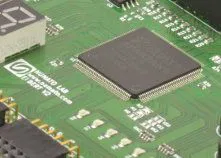Table of Contents:
To make a three-dimensional model, you need a suitable design, on the basis of which a 3D printer will make the object. Today, we come with an explanation of what exactly designs for 3D printers are, how to create them and also where to look for ready proposals.
What is a 3D printing project?
A design for a 3D printer is a three-dimensional model that has been created or modified using appropriate software to meet the general requirements of 3D printing and the limitations of a particular technology.
This means that, in addition to a three-dimensional shape (usually consisting of overlapping triangles), the model must be divided into layers and equipped with appropriate supports for hanging elements, as well as filled with an internal structure that reduces material consumption while maintaining durability.

At each of these stages, it is necessary to consider the printing technology and the material that will be used during the work. In the case of amateur and semi-professional 3D printers, this is primarily printing with filaments or with light-curing resins – SLA, DLP, LCD technologies, etc.
In which format are such projects created?
Designs for a 3D printer are usually available as STL files, describing the model as a grid of triangles in three-dimensional space. However, during the actual printing process, the printer uses G-code files – text commands for specific actions, such as table heating or head movements. Converting an STL file to G-code requires the use of special software that takes into account printer parameters such as layer thickness and workspace.
Designing 3D models yourself
Most people who are interested in 3D printing begin to create their own designs for the 3D printer sooner or later. Designing on your own is not only great fun, but also gives you the opportunity to print elements perfectly adapted to your needs and preferences.
Stages of creating a 3D printing design
Creating a design for a 3D printer starts with creating a 3D model. Depending on the intended use of the workpiece, you can use technical CAD software or a standard 3D modelling programme. The model must then be adapted for printing using slicer software, which will divide it into layers, fill it with appropriate structures and generate supports – all this taking into account the printing technology, printing speed, material used, printer parameters and other important factors.
Which software to choose?
There are now many free and commercial tools available for 3D modelling and post-processing. They can be used on a variety of operating systems, and some also work in a web browser. Below you will find examples of recommended software for various activities related to creating designs for a 3D printer.
CAD modelling programs
If your project is to be of a technical nature, i.e. characterised by a very accurate representation of dimensions and proportions, it is worth choosing a CAD modelling application. This type of software promotes accuracy thanks to the precise auxiliary tools at our disposal when creating a project.
You can use such application as:
- Tinkercad,
- DesignSpark Mechanical,
- nanoCAD,
- FreeCAD,
- OpenSCAD,
- Onshape Free,
- BRL-CAD,
- Autodesk Inventor,
- Autodesk 123D.
Three-dimensional modelling
When creating artistic designs, such as figurines or toys, 3D modelling software that focuses on the visual aspect of the designs will work best. Such projects do not require as much precision as in the case of purely technical models, such as gears and mechanisms, and in fact their irregularity is often the most important aspect of design, so it is better to focus on the comfort of designing and the appearance of the model.
For this type of work it is worth trying out, for example:
- Blender,
- Art of Illusion,
- 3D Crafter,
- K-3D,
- Wings 3D,
- SketchUp Free,
- 3D Slash,
- SculptGL,
- Sculptris.
Slicers, STL to G-code conversion and 3D model processing
Dividing the finished model into layers, generating fills and supports and converting them into G-code, as well as editing the designs for the 3D printer is possible with the help of slicer-type programs. The most recommended applications in this category include programs such as Cura, Repetier-Host, 3D Builder or MeshLab.
Where to look for ready-made 3D model designs?
If you are not interested in designing 3D prints yourself or want to start by using ready-made models, there are thousands of free and pay-for projects available online. You can find them on sites such as Thingiverse, Cults, GrabCAD, Fab 365, Yeggi or My Mini Factory.
In addition, models are also made available by 3D printer and filament manufacturers such as Prusa or Zortrax, and in the case of the former, we wrote an article about a new 3D design library by the manufacturer.
How useful was this post?
Click on a star to rate it!
Average rating 0 / 5. Vote count: 0
No votes so far! Be the first to rate this post.




















